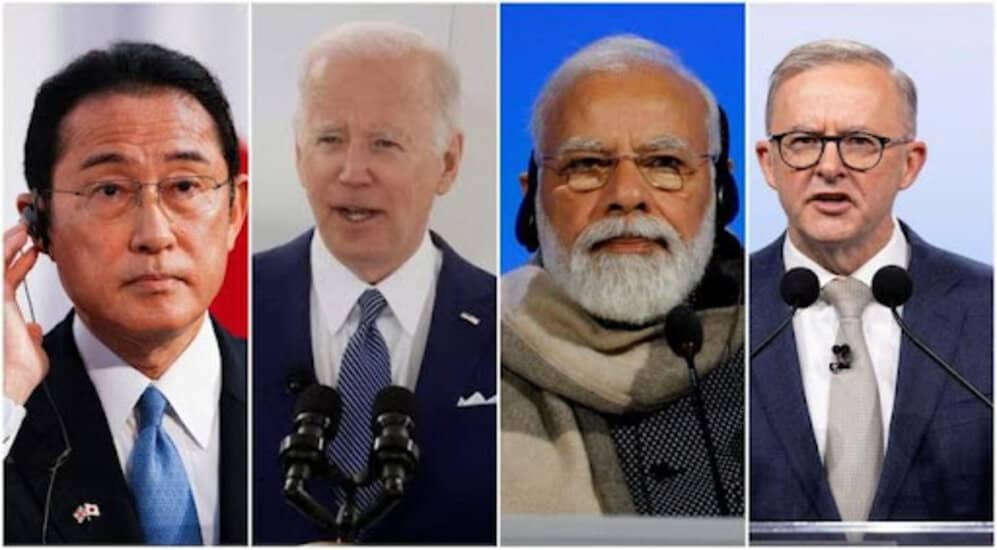
In the realm of international relations, alliances have always played a crucial role in shaping the dynamics of power and influence. One such alliance that has been making waves in recent years is the Quadrilateral Security Dialogue, better known as the Quad. Comprising the democratic nations of India, the United States, Australia, and Japan, the Quad has emerged as a force to be reckoned with in the Indo-Pacific region. However, what sets the Quad apart from traditional alliances is its unique attributes of versatility, acceptability, elasticity, and viability that have caught the attention of nations far beyond its core members.
While China has repeatedly attempted to dismiss the Quad as a threat to peace and stability, its consistent vocal opposition actually underscores the growing appeal of this alliance. Ironically, it is China itself that has inadvertently propelled the Quad into greater relevance. Despite China’s aspirations to be the leading force in other regional groupings like BRICS and the Shanghai Cooperation Organization (SCO), these organizations have failed to witness significant growth or attract substantial attention. In contrast, the Quad has steadily gained traction without positioning itself as an anti-China coalition—an intentional restraint that speaks volumes about the alliance’s thoughtful approach.
China’s rhetoric labeling the Quad as an “Asian NATO” has lost its impact, with only a few capitals still inclined to believe it. The Quad began as a provider of relief and has expanded its scope to offer a wide range of public goods, all while avoiding stepping on the toes of others. Its initiatives span from humanitarian assistance and disaster relief to vaccine partnerships, cable connectivity, cooperative maritime domain awareness, infrastructure development, and investor networks. The Quad’s versatility has earned it acceptance and support from ASEAN countries, including influential nations like Indonesia, which now view the Quad and initiatives like AUKUS as partners rather than competitors.
Furthermore, the Quad’s emphasis on preserving the freedom of the Indo-Pacific, resisting unilateralism, and respecting sovereignty resonates strongly with nations across the region. In contrast, China’s assertive behavior has raised concerns and pushed many countries away, diminishing its previous appeal despite its economic influence, aggressive diplomacy, and growing military power. The Quad, on the other hand, has maintained its appeal by embodying the attributes of versatility, elasticity, and viability.
Unlike other multinational organizations, the Quad does not have a designated head-honcho nation, allowing for a more balanced approach among its diverse members. India, with its unique continental and strategic challenges, brings a distinct perspective to the Quad as a “continental-maritime democracy.” Moreover, the Quad’s informal structure enables it to cover a broad spectrum of work areas that directly and indirectly contribute to human-security goals. Its inclusive agenda eliminates the need for inclusive membership, and unlike organizations such as BRICS, SCO, NATO, or the Belt and Road Initiative (BRI), the Quad does not seek expansion or additional members at present.
One significant attribute that the Quad provides is security. While China has attempted to exploit fears by branding the Quad as an “Asian NATO,” many countries recognize that the alliance can contribute to enhancing security needs in various dimensions such as cyber and space technologies. Moreover, the Quad’s members have developed effective military partnerships without formal alliances, reminiscent of the US’s Associated Power status during World War I. This approach facilitated the support of additional nations in Latin America, albeit in smaller or symbolic ways, and could potentially deter conflicts against any one Quad member.
The future of the Quad holds immense potential, with infinite possibilities for collaborative geometrical shapes to address regional challenges and shape the Indo-Pacific order. As China continues to grapple with its concerns about the Quad, the alliance’s versatility, acceptability, elasticity, and viability draw the attention and interest of nations seeking a transformative force that can safeguard their interests and promote peace and stability in the Indo-Pacific and beyond.
In conclusion, the Quad’s rising prominence challenges China’s aspirations and signals a shifting power balance in the Indo-Pacific. While China may dismiss the Quad’s appeal, its own actions have inadvertently elevated the alliance’s significance. As the Quad continues to forge ahead with its multifaceted initiatives and collaborative approach, its potential to shape the future of the region remains undeniably compelling. The Quad’s attributes of versatility, acceptability, elasticity, and viability have solidified its position as a force to be reckoned with, garnering interest and support from nations seeking a transformative alliance that champions peace, stability, and shared prosperity.

